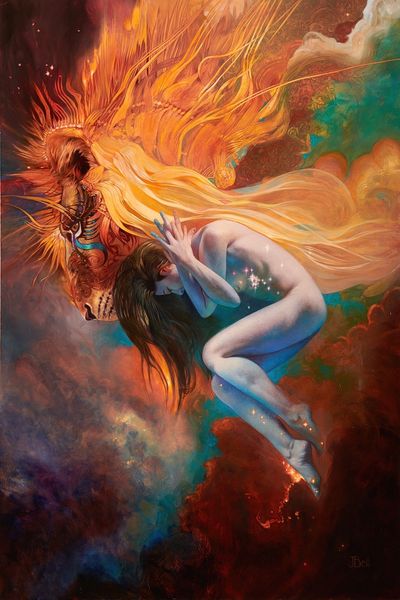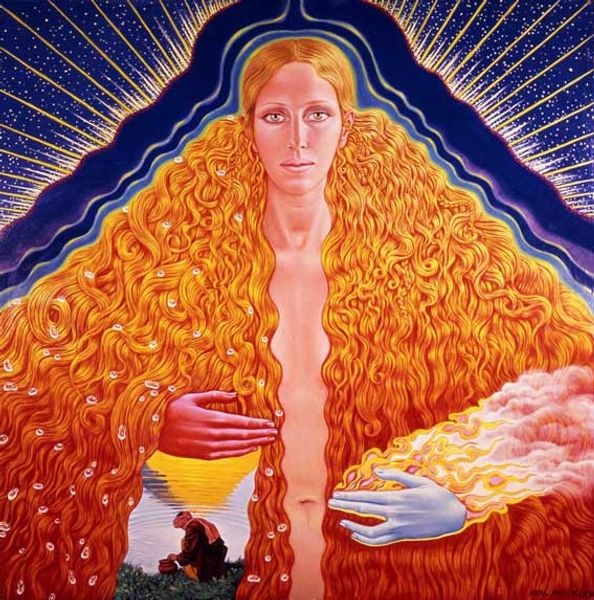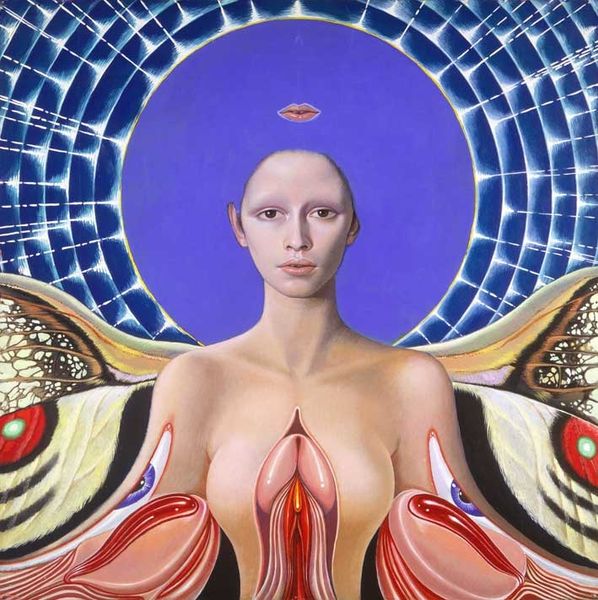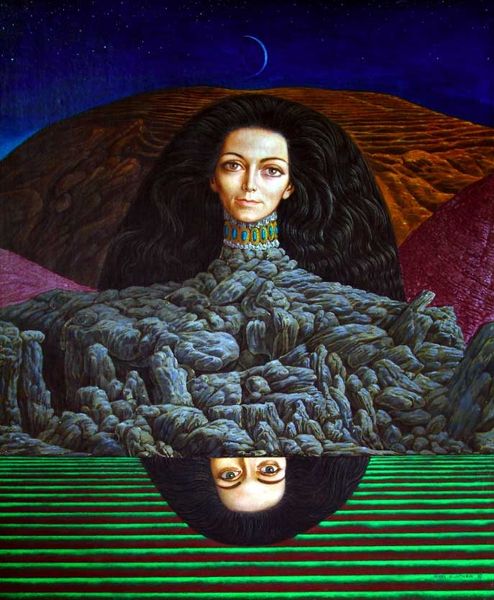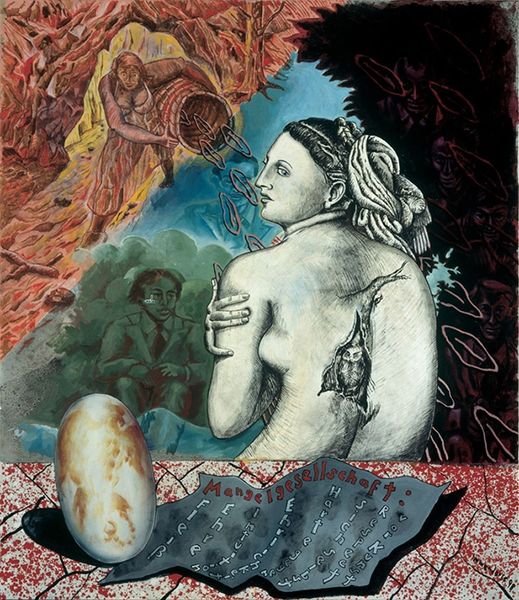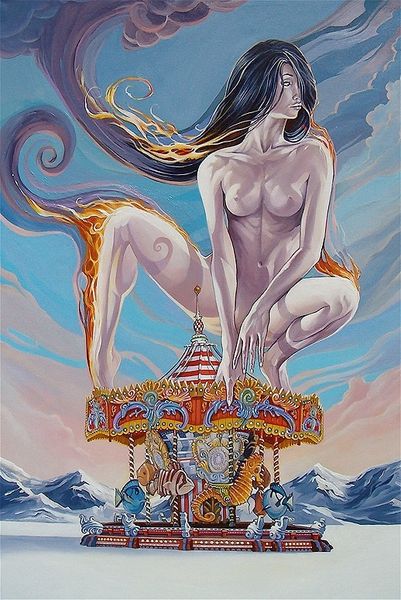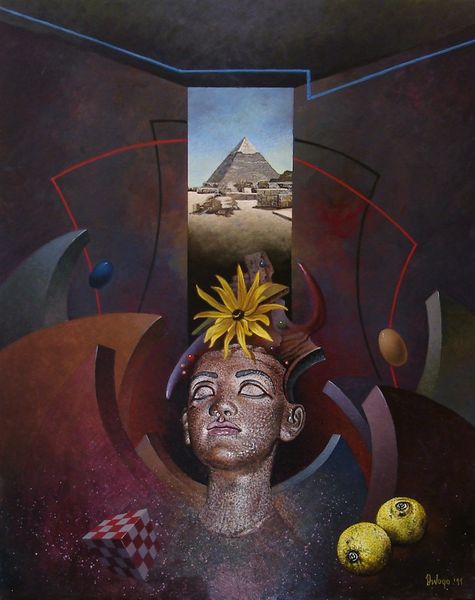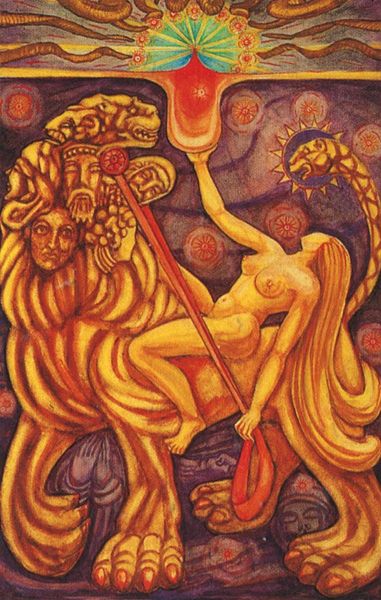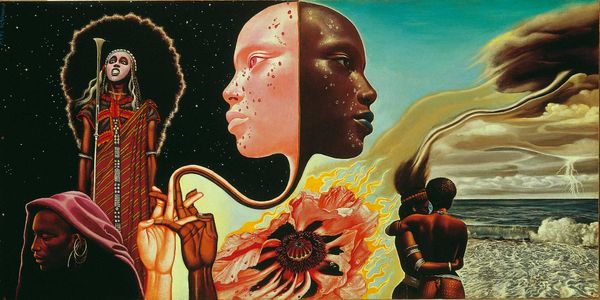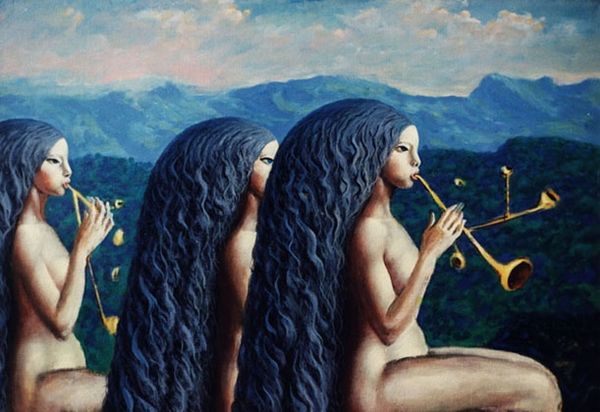
painting, oil-paint
#
portrait
#
painting
#
oil-paint
#
fantasy-art
#
figuration
#
oil painting
#
neo expressionist
#
naive art
#
surrealism
#
modernism
Copyright: Abdul Mati Klarwein,Fair Use
Curator: Let’s examine Abdul Mati Klarwein’s painting, "Moses and Aaron," crafted in 1971 with oil paint. What is your initial response to the piece? Editor: Well, my first impression is that it exudes a surreal intensity. The dual portraits against that almost lunar landscape create a powerful sense of dichotomy and mystical encounter, really hitting me on a visceral level. Curator: Indeed. Klarwein masterfully interweaves diverse symbolic registers here. We see not only these figures, reminiscent of iconic representations of Moses and Aaron but also elements from Kabbalah and perhaps broader spiritual traditions. Consider that the figures blend into one another—notice the symbolism of duality. Editor: That blending really stands out. The contrasting skin tones of the figures – the light and the dark – set up immediate readings of race and identity, especially in the sociopolitical context of 1971. It provokes questions about how Klarwein engages with power dynamics, particularly colonialism and its visual legacies. Curator: Yes, Klarwein, as I read it, uses the opposition to express the connection and synthesis within complex identities. It may be about complementary, not conflicting forces. Look closely: both wear headpieces adorned with symbols. The very lines converging in the background suggest invisible ties. Editor: But is it really 'synthesis,' or are these visual languages still mediated through power? It's intriguing, sure, this blending, but the painting has to be viewed in its historical moment, where appropriation and exoticization were, and still are, pervasive. The visual exoticism, let’s not ignore, it feeds directly into established stereotypes, whether Klarwein intended it or not. Curator: That is a very valuable point to be made, certainly. One must consider this in light of those socio-historic factors you are citing. I'm interested, in contrast, by the more perennial symbology at play in Klarwein's synthesis. I believe, looking deeper, he transcends historical context in some ways, expressing enduring archetypes of transformation and leadership. Editor: I'm not so sure. Ultimately, while the painting is captivating on a purely aesthetic level, it is far too easy to separate its image from any engagement in real-world injustice, or the struggle that defined its own era. I see visual echoes from past oppressions that refuse simple resolution through spiritual platitudes. Curator: A potent note on which to consider this artwork, reflecting upon the burden of its reception and reinterpretation through time. It has been a useful reminder, indeed. Editor: Yes, for me, situating "Moses and Aaron" within a web of race, representation, and the fraught language of cultural exchange is essential work when reckoning with its impact.
Comments
No comments
Be the first to comment and join the conversation on the ultimate creative platform.

